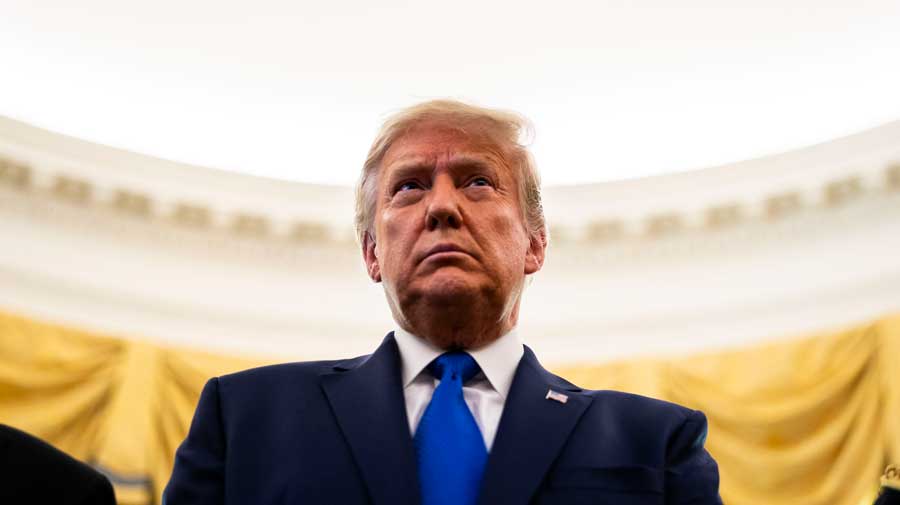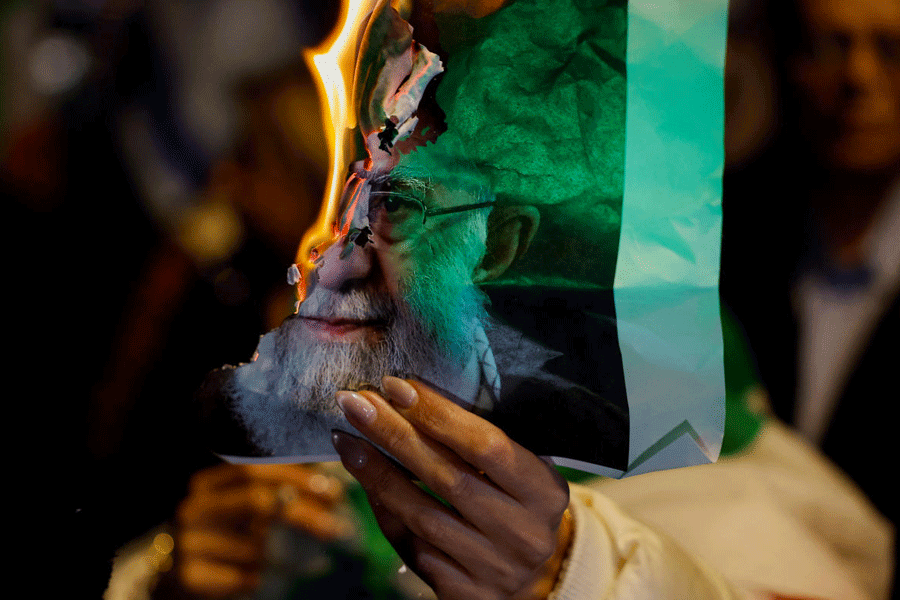The justice department sought a search warrant for former President Donald J. Trump’s residence in Florida after obtaining evidence that highly classified documents were likely concealed and that Trump’s representatives had falsely claimed all sensitive material had been returned, according to a court filing by the department on Tuesday.
The filing came in response to Trump’s request for an independent review of materials seized from his home, Mar-aLago. But it went far beyond that, painting the clearest picture yet of the department’s efforts to retrieve the documents before taking the extraordinary step of searching a former President’s private property on August 8.
Among the new disclosures in the 36-page filing were that the search yielded three classified documents on desks inside Trump’s office, with more than 100 documents in 13 boxes or containers with classification markings in the residence, including some at the most restrictive levels.
That was twice the number of classified documents the former President’s lawyers turned over voluntarily while swearing an oath that they had returned all the material demanded by the government. The investigation into Trump’s retention of government documents began as a relatively straightforward attempt to recover materials that officials with the National Archives had spent much of 2021 trying to retrieve.
The filing on Tuesday made clear that prosecutors are now unmistakably focused on the possibility that Trump and those around him took criminal steps to obstruct their investigation. Investigators developed evidence that “government records were likely concealed and removed” from the storage room at Mar-a-Lago after the justice department sent Trump’s office a subpoena for any remaining documents with classified markings.
That led prosecutors to conclude that “efforts were likely taken to obstruct the government’s investigation”, the government filing said. The filing included one striking visual aid — a photograph of at least five yellow folders recovered from Trump’s resort and residence marked “Top Secret” and another red one labelled “Secret.”
But department officials are not expected to file charges imminently if they ever do. And the specific contents of the materials the government recovered in the search remain unclear — as does what risk to national security Trump’s decision to retain the materials posed. While the filing provided important new information about the timeline of the investigation, much of the information was mentioned, in less detail, in the affidavit used to obtain the warrant, which a federal magistrate judge unsealed last week.
Among the most crucial disclosures were those concerning the actions of Trump’s legal team and whether they had misled justice department officials and the FBI. The justice department effort began in May after the FBI examined 15 boxes of documents the National Archives had previously retrieved from Mar-a-Lago after months of asking Trump’s representatives to return missing records.
The bureau found 184 classified documents in that initial batch. On May 11, department lawyers obtained a subpoena to retrieve all materials marked as classified that were not turned over by the former president. On June 3, his team presented FBI agents with 38 additional documents with classified markings, including 17 labelled top secret.
But one of Trump’s lawyers present during that visit “explicitly prohibited government personnel from opening or looking inside any of the boxes that remained in the storage room, giving no opportunity for the government to confirm that no documents with classification markings remained”, the filing said. Trump’s team also provided the department’s national security division with a written statement on behalf of his office by one of Trump’s lawyers who was serving as the formal “custodian” of the files.
While that person’s name has been redacted in government filings, multiple people have identified her as Christina Bobb. Bobb’s statement was attached to the department’s filing on Tuesday. In it, the lawyer wrote that “based upon the information that has been provided to me”, there had been a “diligent” search and all documents responsive to the subpoena were being returned. But law enforcement officials soon developed evidence that the statement was untrue.
The FBI “uncovered multiple sources of evidence indicating that the response to the May 11 grand jury subpoena was incomplete and that classified documents remained at the premises, notwithstanding the sworn certification made to the government on June 3,” the justice department filing said.
“In particular, the government developed evidence that a search limited to the storage room would not have uncovered all the classified documents at the premises.” The justice department obtained at least one more subpoena, for security camera footage from inside Mar-a-Lago, and the search warrant affidavit revealed that it had been working with multiple civilian witnesses. The result was the search warrant carried out on August 8.
The filing noted that “the FBI, in a matter of hours, recovered twice as many documents with classification markings as the ‘diligent search’ that the former President’s counsel and other representatives had weeks to perform”, a fact that it said, “calls into serious question the representations made in the June 3 certification and casts doubt on the extent of cooperation in this matter”.
(New York Times News Service)










